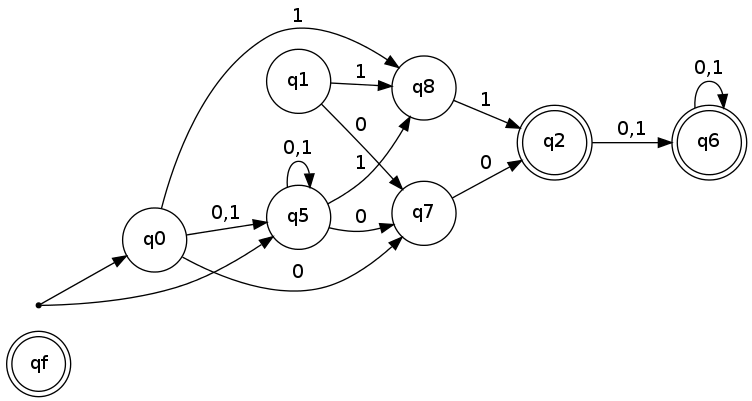I've had this little doubt bothering me since four semesters now, so I've come here to resolve it. Theoretical CS was probably not the right place to ask.
Coming to the question, my old coursebook (Theory of Computer Science - Automata, Languages and Computation (Eastern Economy Edition) by KLP Mishra) details the conversion of the regular expression -:
$(0 + 1)^* (00 + 11)(0+1)^*$
to a finite automaton. The book details the process as follows:

I am able to grasp the process uptil step (d). I do not understand how (e) was obtained, and there is no explanation given. I tried to convert (d) to (e) by removing null-moves, but I am not able to get (e) - I obtain a bunch of redundant states (extra initial and final states).
It is not possible to use the DFA minimization procedure to obtain (e) after the null-moves are deleted, simply because this isn't a DFA yet - it's still an NFA. Note that I've not shown the NFA to DFA conversion procedure, which was on the next page. Could someone point me in the right direction?
There are no steps given to obtain (e) from (d). That's what's confusing - I know I have to remove the null-moves but not how to get the neat and 'minimized' transition system given by (e).






